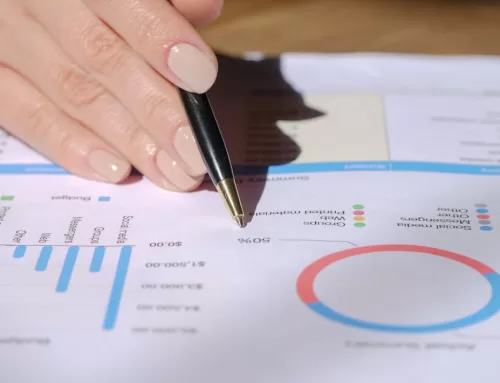Invoice Collections: The Squeaky Wheel Gets the Oil
For most small businesses, cash is oxygen. That’s why late-paying clients can be a time-consuming and frustrating challenge. It not only ties up money you needed to pay your own vendors and expand but getting clients to pay-up can become stressful and cause real dilemmas (should I pressure to collect or remain Mr. Nice Guy?). In support of this a recent study found that the average small business owner spends over one day per month chasing down their money.
So keep these thoughts in mind in dealing with late-paying clients:
-
Adopt Early Payment Incentives and Late Payment Penalties
In your contracts and invoices there are actions that you can take to discourage delinquent payments. First, consider offering a financial incentive for prompt payments. The most common is “2% 10 net 30” which means your vendor can take 2% off of payments due and you must accept this as payment in full. Yes, this can be expensive. Credit cards are another alternative, averaging about 3% in fees to the merchant (you). This sure makes paying is convenient for vendors but watch out – they can claw-back amounts if they complain to their credit card provider. ACH and debit cards are much cheaper if you can train your clients to pay this way. If you’re hesitant about the fees here, think of it this way: the fees are often well worth the peace of mind in knowing that the money is now on your side of the table and you’ve saved much time in collections work.
Also consider late payment penalties. Such as “… at an 18% ammual rate or the highest rate permissible by law.” But penalties can be a double-edged sword. Yes, they encourage on-time payments but may can also upset clients. Customers don’t like penalties. And most vendors don’t take them seriously anyway, knowing that small businesses often waive these charges. However they are handy if you end up in court, or just want to negotiate.
-
You are Collecting Your Money; Not Asking for a Favor
Don’t be apologetic when asking clients to pay up. If your calls, letters and emails are a nuisance – too bad. Deadbeat clients are taking bread off of your table. Many will simply not pay unless the pressure is on, even if the cash is easily available. “The squeaky wheel gets the oil.” The more you squeak the more likely you are to get paid – over others. But squeaking is not anger; more on this in the next blog entry.
Be assured that most business owners do not enjoy asking clients to pay what they owe. There are so many more pleasant and productive things to do. As a result many continually struggle with late-paying clients. Just keep in mind: collections is simply a part of the landscape. It will always be needed. Asking clients to pay is part of your business. And one of the most important things is to adjust your attitude on to “this just needs to be done – a lot” and set a regular follow-up schedule.
Also keep in mind that deadbeat clients who often know that they are not acting correctly and feel guilty. At least a little. They know that you worked for the money and deserve it. They should indeed be the ones feeling bad – not you. During these times your motto may become “I deserve this money – it’s mine and I am not the least defensive in asking for it.”
-
Automate Invoicing and Collections
Set aside time each week – or as frequently as needed – to get your money in the door. This will involve a series of telephone calls and emails. Of course you are already using one version or another of QuickBooks, which allows invoices to be emailed with an assortment of increasingly serious cover-letters right out of the program. This feature alone assures that customers immediately receive the invoice, and you are no longer dependent on licking stamps and USPS.
When payments are made via credit or debit card QuickBooks can automatically record the payment too, saving time in updating your receivables reports.
QuickBooks may also be augmented with a CRM styled for collections follow-up so that you may be immediately reminded next Tuesday that “Bill is back from vacation today: call him and ask if he has seen and approved the invoice.” QB does not have deep features in this area and in complex situations these features make life a lot easier (yes, the customer often makes payments needlessly complex).
Reminder emails may be quickly sent too, especially out of QuickBooks Online.
Another choice if there are a lot of invoices is to implement payment options such as Bill.com or Paypal to make it that much easier for customers to pay. There are many other supporting apps too – check https://apps.intuit.com.
-
Be Clear When Payment is Due
It’s just good business to be clear about when payment is expected. For starters, this should be in your agreement with customers (“Invoices will be sent via email and are due Net 30, Net 15, Net 10 from the invoice date, or my favorite “Due on Receipt”). Invoices should be consistent with any agreements and similar docs – don’t give the customer a chance to be confused. And make sure that all paperwork is completed before serious work begins or customers will have less incentive to cooperate. Note that some are actually looking for reasons not to pay.
Also include language such as “Client is deemed to accept charges unless Company is notified within 10 days of receipt” to avoid squirrely reasons to avoid paying long after the due date.
The time to negotiate payment terms is before work begins and the agreement is signed; afterwards things will only get more difficult. This is especially important in cases where legal processes might become necessary. Any court from small-claims on up will need to see that payment was clearly due and is now delinquent.
Well that’s enough for now – some additional tips on collects will be in the next blog entry.
If you need help with collections contact us – we can help!







